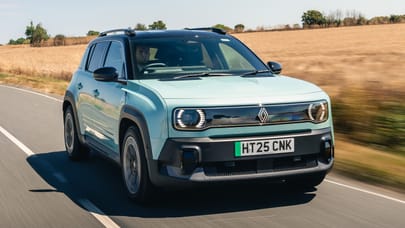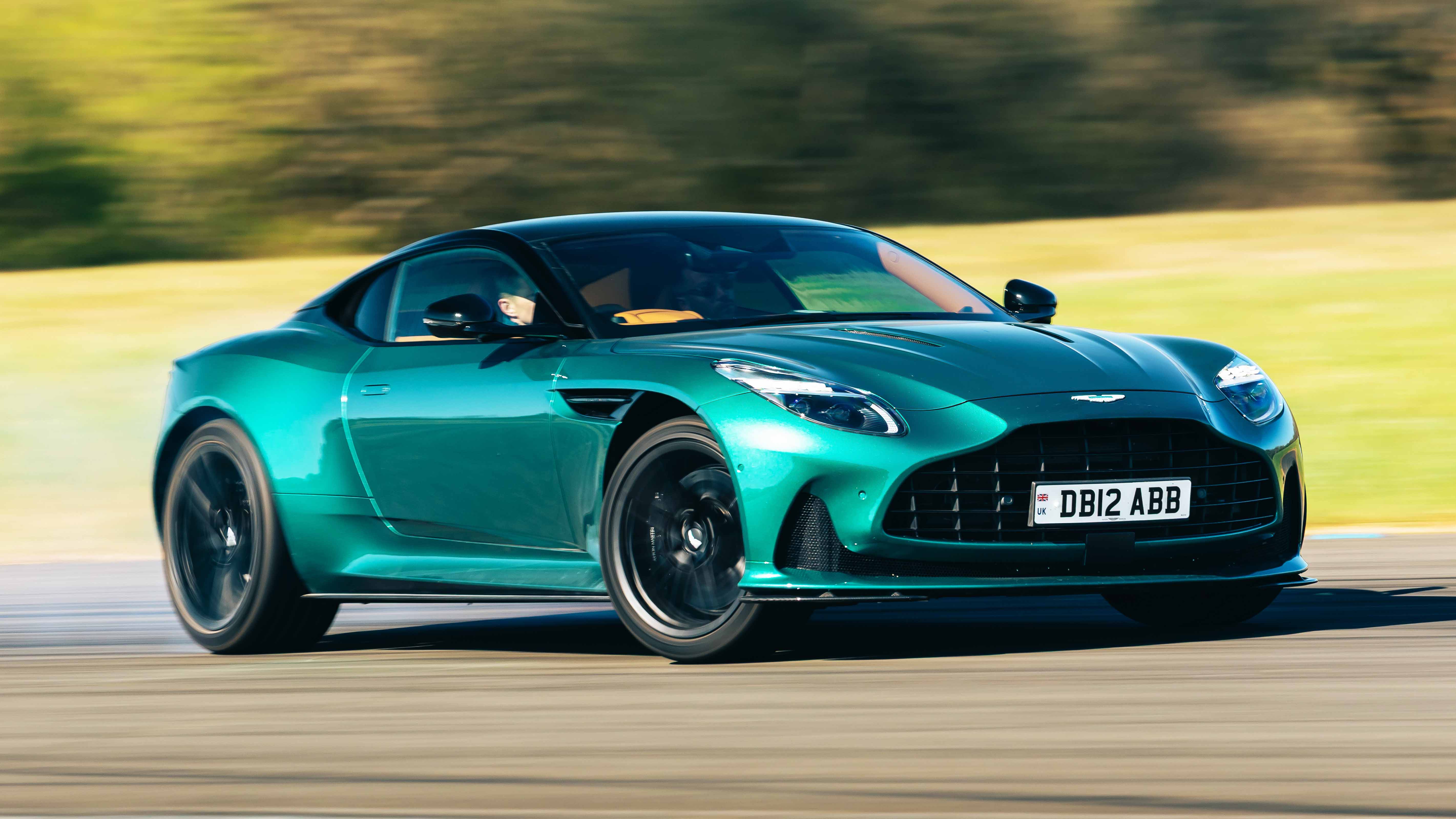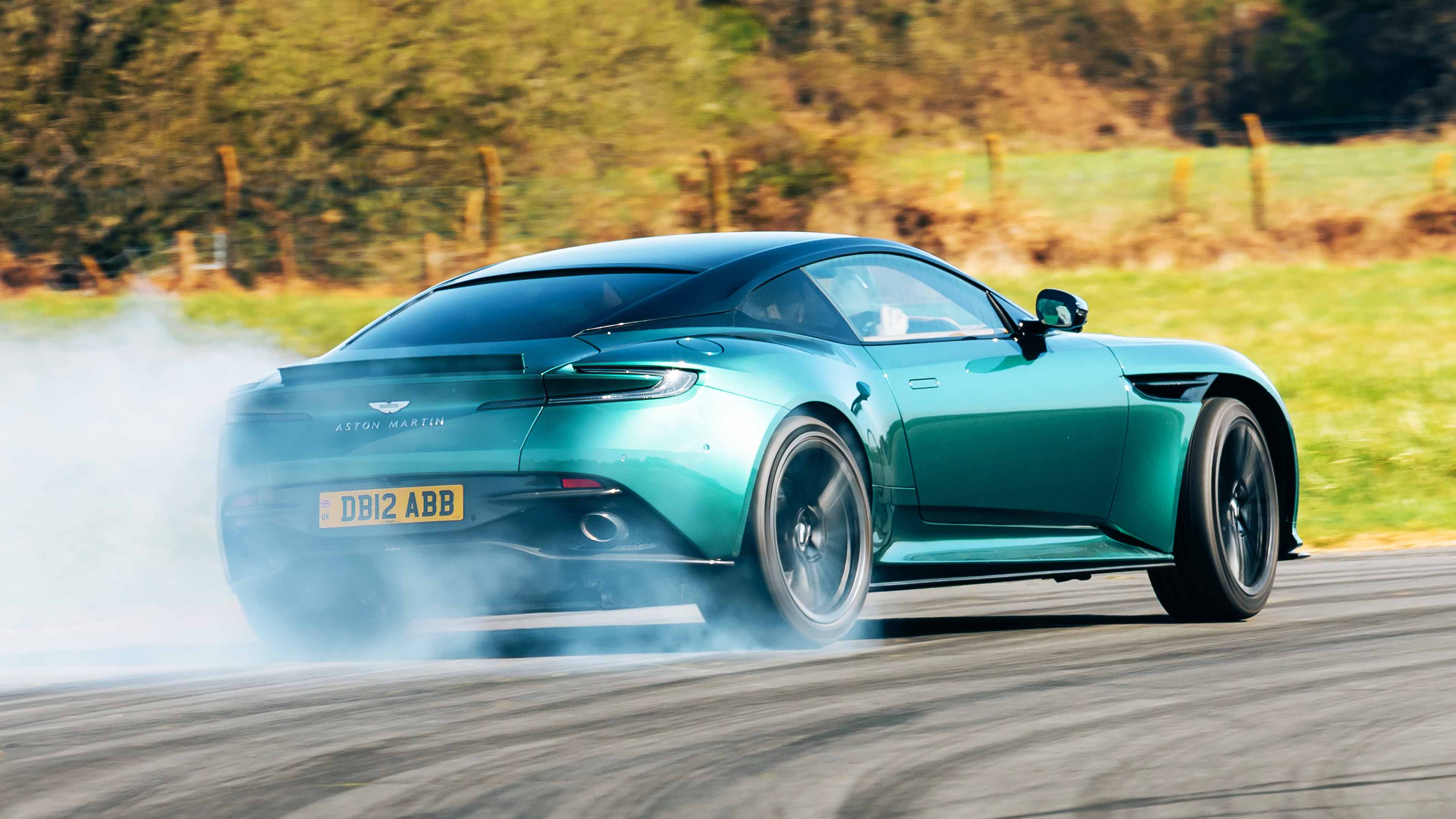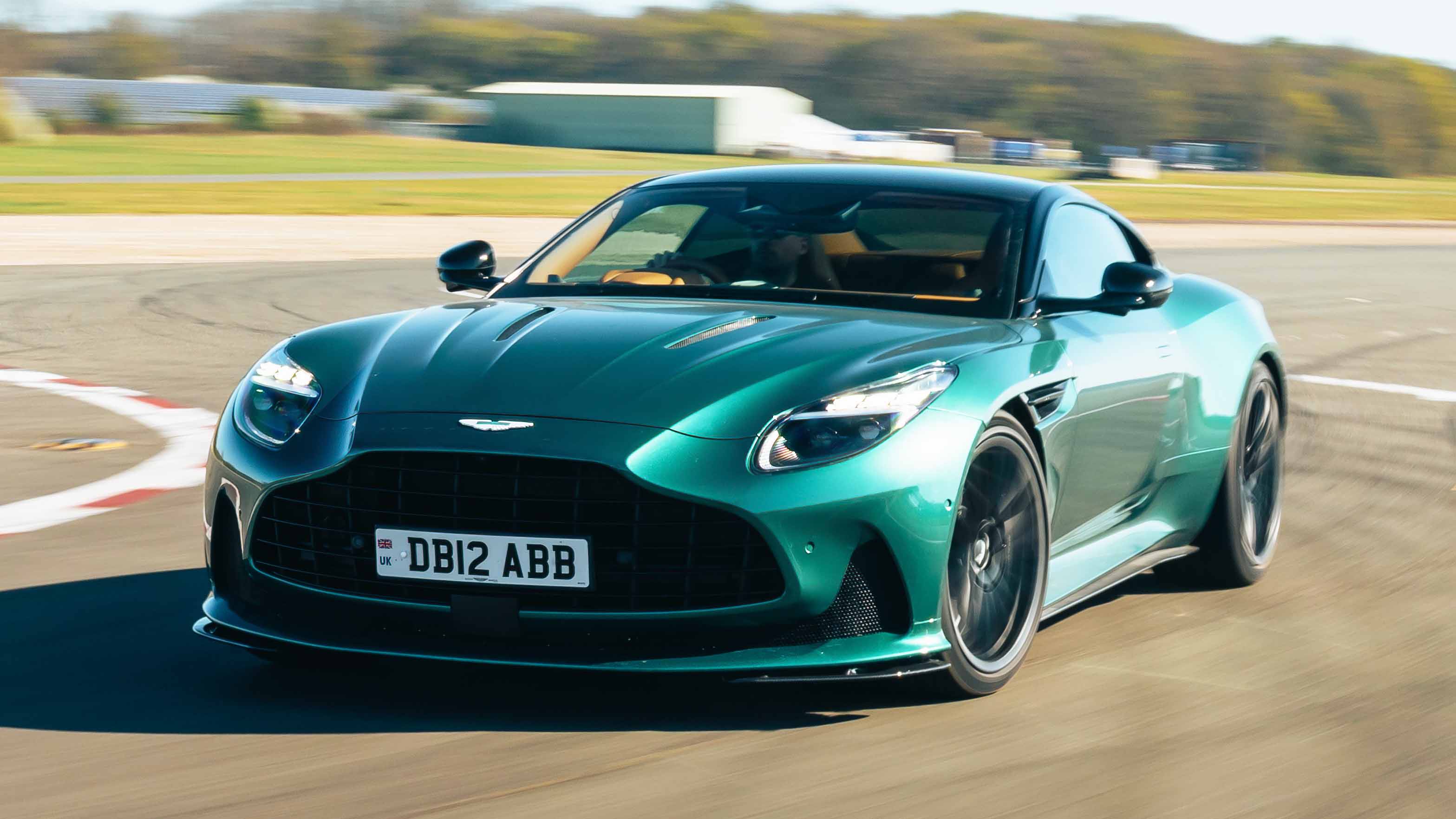
SPEC HIGHLIGHTS
- SPEC
Aston Martin DB12
- ENGINE
3982cc
- BHP
670.5bhp
- 0-62
3.6s
How does the Aston Martin DB12 handle the Top Gear test track?
It feels faintly absurd sliding a £240,000 car around a racing circuit while lounging in a tub of hand-stitched caramel leather. But then, Aston has declared the DB12 the first ‘Super Tourer’, and if you’re going to unleash all 671bhp of AMG-sourced twin-turbo V8, it has to be somewhere it won’t land you in a hedge or a magistrates’ court. So to the Top Gear test track I went.
And anyone who has seen a James Bond film knows Astons look fantastic on the limit. The DB12 is no different. It feels kinda right, as the funny little vertical pop-up spoiler shows its face and the rear tyres start smoking. Special tyres, because after many years with Pirelli, the DB12 now runs on Michelins. Aston has gone bespoke with Michelin’s Pilot Sport 5S – a tailor-made cocktail of compound, profile and tread pattern, brewed for all conditions and delivering bite, control and grip well beyond what a near-700bhp rear-driver should sensibly manage.
But the DB12 isn’t a natural track car – it’s too refined. Even with 671bhp it’s not as explosive, direct or characterful a V8 as it is in various hot Mercs. Or even its smaller sibling, the Vantage. In that car the same engine is rampant and tuned to be angrier. In the DB12, it sounds a bit like the disappointing flat-plane crank that’s in the AMG GT Black Series. Turbos mute the intake, GPFs mute the tailpipe noise, there’s rare whip cracks in its most aggressive mode, and with double glazing the engine note is pumped in through the Bowers & Wilkins sound system. Which just feels a bit false.
To get the most out of the DB12 on track you’ve got to twizzle a knob: the knob that houses the starter button. Not only does this start the engine (always a good start to a track day), but it also twists to cycle between GT, Sport and Sport Plus, and the new Individual and Wet modes the DB12 has. These modes dial the engine and gearbox up or down, but also firm up or slacken off the adaptive Bilstein dampers.
On track, go max attack – it’s the most fun as turn-in response is most positive, the car doesn’t pitch or roll as much, and the eight-speed ZF ‘box, although quick throughout, has a bit more bite to it on up- and down-shifts, giving you more feedback and understanding of what the engine is up to.
Press and hold the traction control button and the knob becomes something else entirely – a selector for the ten-stage TC system. Sometimes it’s counter-intuitive to know if 1 is lots of intervention or none. So always be mindful. But as you slacken the system off you go from subtly steering the rear with the throttle, to allowing greater slip angles before it reins you in – or wind it off entirely and you’re at your own risk of a tasty bill.
With a long wheelbase and lots of power, you can overwhelm the rear tyres – huge 325-section – with a slug of throttle and bung. But sustaining a drift is trickier; the car feels oddly uncertain at its centre point – not as languid or telegraphic as, say, an M5, which lets you write sonnets mid-drift. The DB12 is spikier.
More troubling, however, were the carbon ceramic brakes. Cold, they offered all the reassurance of a soggy custard cream – no bite, no feel. As they warmed, things improved, but even with their broadsheet-sized 400mm discs up front and 360mm at the rear, they never quite inspired confidence. They do, however, lop 27kg off the unsprung mass – which helps agility – and their mirrored gunmetal finish looks marvellous behind the alloys.
So, does the DB12 deliver on the ‘Super’ in ‘Super Tourer’? Absolutely.
Featured

Trending this week
- Car Review
BMW iX3






